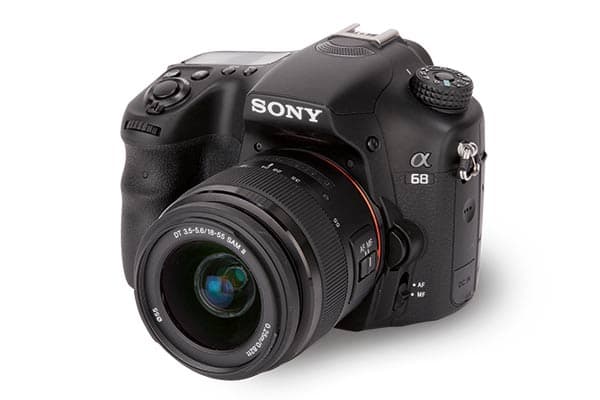Sony Alpha 68 review – Performance

Although the 79-point AF system covers roughly the same proportion of the frame as those on similar cameras, its dense saturation makes it highly likely that at least one point will be covering the intended subject as soon as you point the Alpha 68 towards it. The system generally brings subjects into focus with impressive speed, and even in poor lighting it proved sensitive enough to pick out low-contrast subjects that might tax the systems inside similar models.
Furthermore, with points positioned so closely together, the system easily tracks subjects as they move around the scene. It appeared to have no serious issues tracking subjects moving at a moderate pace, and I still managed a pleasingly high hit rate when it was challenged with subjects moving away from, or towards, it. I was also pleased with how well the system appeared to remain focused on birds in flight, whose speed and less predictable movements present a greater challenge.
This competence carries over to the continuous advance priority AE mode, of which the crop into the centre of the frame removes much of the area not normally covered by AF points. This presents another advantage for the telephoto user, namely, that the crop mode combined with the camera’s crop factor of 1.5x results in an effective focal length that’s double that of the actual lens used.
While the Tru-Finder lacks the clarity of many other electronic viewfinders we’ve seen on recent models, it performs well in good lighting conditions and presents a 100% field of view – something many of the camera’s DSLR rivals fail to offer. The LCD screen, however, isn’t anywhere near as nice to use, with poor visibility in bright light and a general lack of clarity sorely letting it down.

High ISO image quality is decent enough – this is at 6,400 – but noise reduction robs JPEGs of find detail
The camera’s metering system does well in a range of conditions. I found it was less easily swayed into underexposure when faced with large areas of highlight details than some other models, although keeping the camera’s dynamic range optimisation (DRO) option turned on is advised for high-contrast scenes. Processing raw files shows that a decent level of detail can be regained in both shadows and highlights without the process encouraging too much noise in the former. However, it’s a pity the option to process raw images in-camera, or indeed any post-capture adjustments past rotating images, is unavailable.
Although the level of detail in images is perfectly good with a capable optic and appropriate technique, the kit lens is something of a let-down in terms of sharpness. The camera’s noise-reduction system can also rob images of finer details. This is something to be aware of in the JPEG-only continuous advance priority AE mode, which often raises sensitivity to enable shutter speeds to be fast enough to freeze motion.
Sony’s creative styles feature offers everyday options such as standard and vivid complemented by more niche effects such as clear and autumn leaves. The standard of JPEGs straight out of the camera is fine at lower sensitivities, and colours and white balance are both generally sound, although I often found this accuracy translated into somewhat plain images. Experimenting with one of the secondary creative styles, and nudging up sharpness, goes some way to achieving punchier results.







